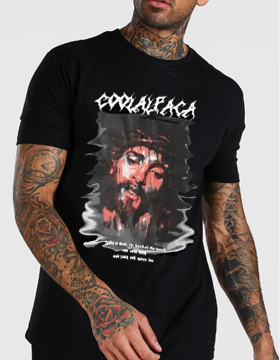French Terry vs. Fleece: Which Fabric is Better?
French Terry vs. Fleece: Which Fabric is Better?
When selecting fabrics for clothing, French terry and fleece are two popular choices among manufacturers and wholesalers. Each fabric has its unique qualities, but which one is better suited for your needs? This article provides an in-depth comparison of French terry and fleece to help you make an informed decision.
French terry is made primarily from cotton, offering excellent moisture absorption and breathability, making it ideal for moderate warmth and casual wear. Fleece, typically made from polyester, provides superior insulation, lightweight warmth, and quick-drying properties, making it perfect for colder weather and outdoor activities.
Let's explore the characteristics, advantages, and best uses of each fabric to determine which one fits your specific requirements.
1. Introduction to French Terry and Fleece
French terry is a knit fabric that features a smooth surface on one side and looped piles on the other. It is typically made from cotton or a blend of cotton and synthetic fibers. Fleece, on the other hand, is a soft, fuzzy fabric usually made from polyester. It has a plush feel on both sides, making it exceptionally warm and cozy.
2. Characteristics of French Terry
French terry is known for the following characteristics:
Moisture Absorption: It can effectively absorb moisture, keeping the wearer dry and comfortable.
Breathability: The fabric is breathable, making it suitable for mild weather and activewear.
Comfort: French terry is soft and comfortable against the skin, ideal for loungewear and casual clothing.
3. Characteristics of Fleece
Fleece is recognized for its unique properties:
Insulation: It provides excellent insulation, making it perfect for cold weather.
Lightweight: Despite its warmth, fleece is lightweight and does not add bulk.
Quick-Drying: Fleece dries quickly, making it suitable for outdoor activities and sportswear.
4. Pros and Cons of French Terry
Pros:
Excellent moisture absorption, ideal for activewear.
Breathable and comfortable, suitable for everyday wear.
Durable and can withstand repeated washing.
Cons:
Not as warm as fleece, less suitable for very cold weather.
Prone to pilling over time, requiring regular maintenance.
5. Pros and Cons of Fleece
Pros:
Superior warmth, ideal for winter and outdoor activities.
Lightweight and comfortable, providing warmth without bulk.
Quick-drying and easy to care for.
Cons:
Less breathable than French terry, can feel stuffy during intense activities.
Made from synthetic fibers, less environmentally friendly than cotton-based fabrics.
6. Best Uses for French Terry
French terry is perfect for:
Activewear: Such as joggers and hoodies, offering breathability and comfort.
Casual Wear: Like sweatshirts and T-shirts, providing everyday comfort.
Children's Clothing: Soft and gentle on the skin, suitable for young children.
7. Best Uses for Fleece
Fleece excels in:
Winter Outerwear: Including jackets and coats, offering exceptional warmth.
Outdoor Gear: Such as fleece pullovers and vests, ideal for hiking and camping.
Home Wear: Like pajamas and loungewear, providing coziness at home.
8. How to Choose the Right Fabric
Consider the following factors when choosing between French terry and fleece:
Season and Climate: Opt for fleece in cold weather and French terry in mild conditions.
Intended Use: Use French terry for active and casual wear, and fleece for warmth and outdoor activities.
Comfort: Choose French terry for next-to-skin comfort and fleece for outer layers.
9. Environmental Impact and Sustainability
Both fabrics have different environmental impacts:
French Terry: Made primarily from cotton, which is biodegradable but water-intensive in production.
Fleece: Made from polyester, which is not biodegradable but can be made from recycled materials, reducing environmental impact.
10. How to Find Reliable Clothing Suppliers
Finding reliable clothing suppliers is crucial for manufacturers and wholesalers. Here are some strategies:
Online Marketplaces: Platforms like Alibaba and Global Sources offer numerous supplier options.
Trade Shows: Attend industry trade shows to meet suppliers and evaluate their products firsthand.
Networking: Leverage industry associations and online forums for recommendations.
Social Media and Forums: Utilize LinkedIn and industry-specific forums to find and vet potential suppliers.
Verification Services: Use third-party services to verify the legitimacy and reliability of suppliers before committing.
Summary:
French terry and fleece each have distinct advantages depending on the intended use and climate. Understanding the properties and best applications of each fabric can help manufacturers and wholesalers make the best choice for their products. Whether you need the breathability of French terry or the warmth of fleece, selecting the right fabric is key to producing high-quality, comfortable clothing.


